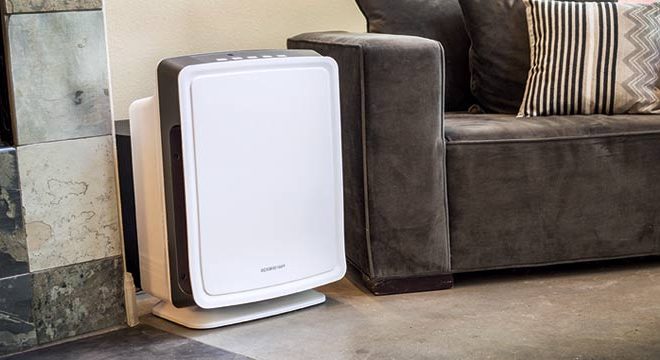
Technology
The most effective air purifiers
Eventually, no real home residence or office is airtight; fresh particles are constantly being drawn in through doors, windows, ducts, and other openings. Thus air purification is an ongoing process–and also to be successful, air compressors will need to operate more or less round the clock. As the EPA states, “The ideal method to deal with residential indoor air pollution would be to control or remove the source of the pollutants to ventilate the house with fresh outside air.” That means: Do not smoke inside, dust and vacuum regularly, and maintain your pets out when possible.
Go to this order with realistic expectations, however. The majority of the filters that you see do not filter everything–because we describe in detail, many are HEPA-style filters which can not capture nanoscale molecules such as gases (radon, VOCs), and can not do anything regarding several pollutants–dust mites and pet hair loss, such as–that sink and adhere to furniture and other surfaces, and stay in the environment after the atmosphere was purified. To eliminate these, you will also need a fantastic dust cleaner or vacuum cleaner.
Then you’ve got clear signs that caliber air purifiers are in fact quite good at their principal job, which would be to eliminate particulate matter from the atmosphere–good dust, pollen, mould spores, etc. Bearing that in mind, it is not as a surprise to find out that air conditioner owners offer you extensive, virtually universal testimony which the machines boost their sleep, decrease their allergies, or reduce their allergies.
Air pollution from US combustion emissions contributes to 200,000 premature deaths per year, based on some 2013 MIT study.
Powerful air compressors can be costly to buy and operate. And despite the successful advertising to the contrary, scientific studies don’t support claims which they enhance your wellbeing. That is partially because it’s exceptionally hard to disentangle air-quality affects from other ecological and genetic factors which affect health.
These products are generally not inexpensive, however they tend to last a while, and also the long-term approach helped us recommend ones that really provide a fantastic value.
We focused on purifiers rated to clear distances of at least 350 square feet–larger than most living rooms. At this size rating, vacuums can maintain most living spaces clean even on their quieter, low-to-medium settings, and not need to burst to a noisier high setting all the time. But new for 2017, we also analyzed an economical purifier rated for spaces smaller than 150 square feet–basically, one made solely for a bedroom or office. Reader feedback indicated enough folks would rather pay less upfront in exchange for a performance trade-off.
With all these criteria and constraints in mind, over the duration of four rounds of study (yearly since 2014), we have surveyed hundreds of models in the Amazon best-seller list and big-box stores (Best Buy, Home Depot). We’ve read the testimonials at Consumer Reports (subscription needed) and in specialty air purifier sites including Allergy Buyers Club and Achoo Allergy. We also like Top Ten testimonials, that has a clean and easy-to-use website with informative content. The concept is that ozone, a highly reactive form of oxygen, will “neutralize” or “break down” pollutants. Setting aside the dubiousness of that claim, even lower levels of ozone can be harmful. It’s crazy to introduce a new pollutant when the goal is to reduce pollution overall.
We did not prioritize smart performance, which, as in other technology, is becoming more of a norm in air purifiers. For air purifiers, “smart” generally means they can provide you more info and more management. Some can be monitored and corrected remotely via a phone app; some can track a home’s air quality and send you updates on it. We do not consider smart functionality a necessity, though, for 2 reasons. First, since our decades of testing have shown that a fantastic air purifier will make and keep excellent air quality only when allowed to run continuously on a moderate setting (versus letting the air quality, and the fan speed, fluctuate, as happens in smart manners). Second, because for now you often have to pay a premium for smart performance, and while we can see the charm, we don’t think you are really getting sufficient for your excess price.
Based on this research and our ever-growing understanding from years of assessing purifiers ourselves, we have now selected and tested 18 air purifiers that fulfilled our first standards and which have a history of long-term performance, high professional evaluations, and client satisfaction. Among all them, we’re confident we have taken the complete measure of what is available, and what’s rewarding.
We believe the rate of purification is vital. We looked for machines which can cycle all the air in an area at least two times a hour, and four or five occasions–to quantify this, we looked in the Clean Air Delivery Rate (CADR) criteria delegated by the Association of Home Appliance Manufacturers. Our goal was a 200+ CADR, which entirely cycles the atmosphere in a 350-square-foot space about four times a hour. HEPA stands for High Efficiency Particulate Arrestance (or Higher Efficiency Particulate Air). We go into detail on the believing in How HEPA filters do the job. That section further distinguishes between fundamental HEPA products and another kind of HEPA purifier that can also remove smaller pollutants that a normal HEPA filter would miss. We believed both kinds for the guide.
















0 comments